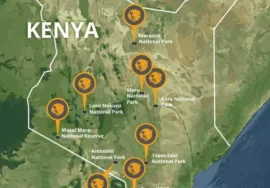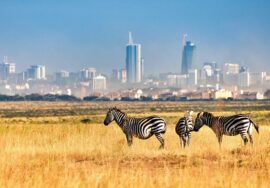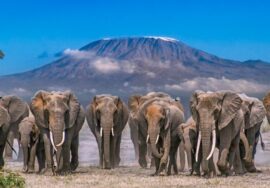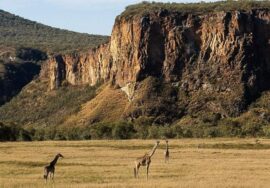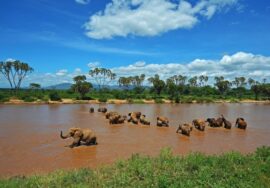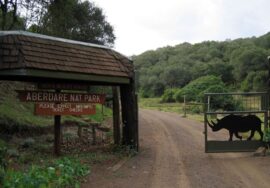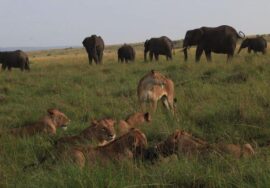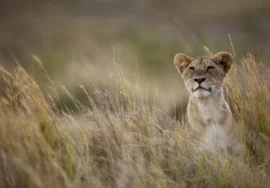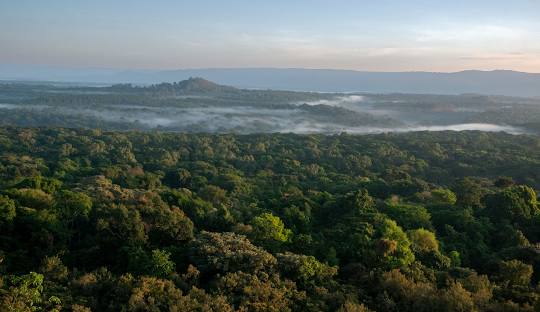
KAKAMEGA FOREST RESERVE
This is Kenya’s only tropical jungle. It gives you a taste of how the continent used to look, with plants hanging down and 300 bird species and 400 butterfly species flying around.
Tea plantations and other forms of development have destroyed most of the original African forest. However, you can walk along the trails here, just like people did thousands of years ago, past ferns and orchids and see mongooses, civets, red-tailed monkeys, baboons, cobras, vipers, and even green mamba snakes.
A Real Jungle
This jungle used to cover most of central and eastern Africa. Ten percent of that land is now gone, which makes Kakamega even more valuable. Smaller animals like aardvarks, porcupines, giant forest hogs, colobus monkeys, parrots, and the black-billed turaco can be seen on this tour instead of the usual big game.
It has waterfalls, giant fig trees, and birds and flowers. One of the trees is said to be over 700 years old.
Join us for a walk.
The area lets you go on a walking safari, so follow the well-marked paths and get to know this wild world better. You can go on trek with a Kenya Wildlife Service (KWS) ranger or on your own. You can go on walks at night, watch birds, and visit the park’s lookout spots.
The Luya People – These people have lived in the area for a long time. Spend some time with a different culture one evening by meeting this group. They will tell stories from the past, dance, and even teach you how to use their native medicines.
Check out the birds. Kakamega is full of beautiful wildlife. At 6:30 am and 4:30 pm, the Kenya Forest Service leads bird-watching trips that last two hours. Don’t miss this chance to find and learn more about these friendly friends.
Sunrise and sunset: Safari Trips to Kenya guides have planned trips to Lirhanda Hill so that people can see the colors of the day in the early morning and late evening. There are tours at 5 am and 5 pm.
Walks at Night: For a different kind of jungle adventure, the Kenya Wildlife Service leads two-hour safaris at night.
Mama Mutere is the reserve’s oldest and biggest tree. This bush icon is 40 m (131 ft) tall and has been around for hundreds of years. Its bark has been used in traditional medicine.
Isiukhu Falls and the Yala River are well-known sights in Kakamega. The KWS plans these 5–7-hour treks.
Kakamega Forest Reserve has waterfalls.
This thick jungle habitat is made up of 238 square kilometers (91 square miles) of old, lush plants. It’s really high—1,600 m (5,250 ft) above sea level.
It is about 216 miles (348 km) northwest of Nairobi.
Kakamega is in a jungle, so it rains a lot—an average of 1,200 to 1,700 millimeters (47 to 67 inches) per year. Expect temps to stay around 250C (770F) for a long time.
The best time to go: It rains here all the time; it depends on how much you like it. The rainiest months are April, May, and August. From December to February, it rains a little less.
Business hours: 8 a.m. to 6 p.m.
How to get there: Safari Trips to Kenya can help you book a tour. It will be a style trip because the 4×4 safari Jeep is specially equipped for it.

